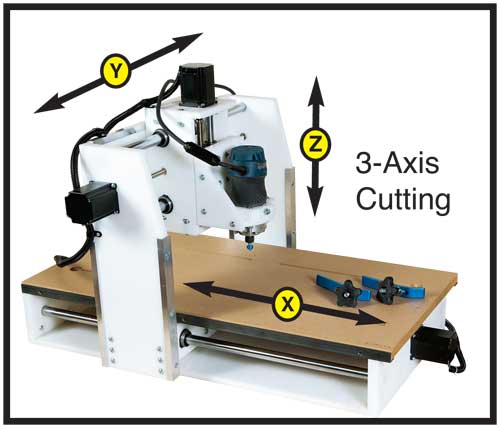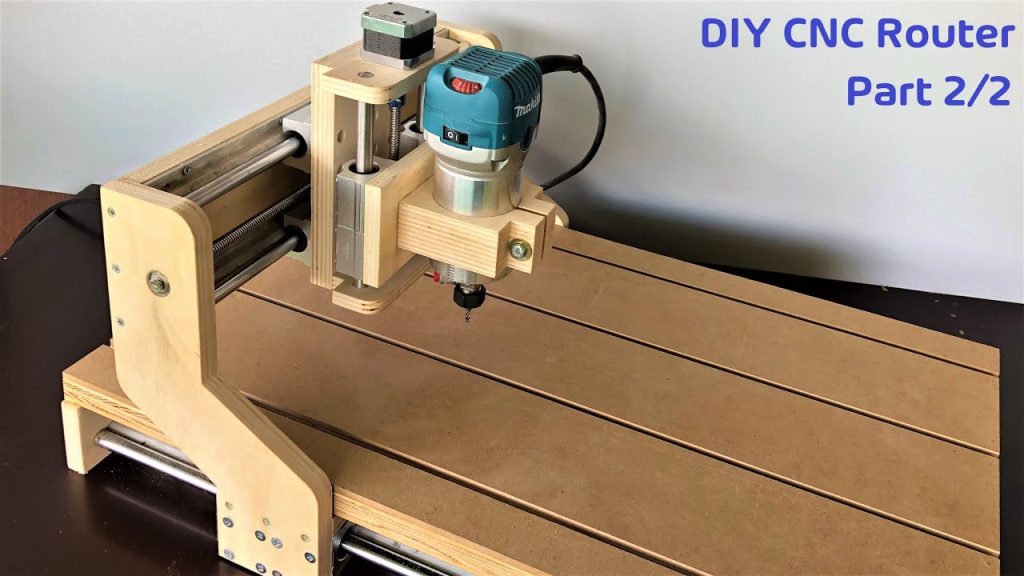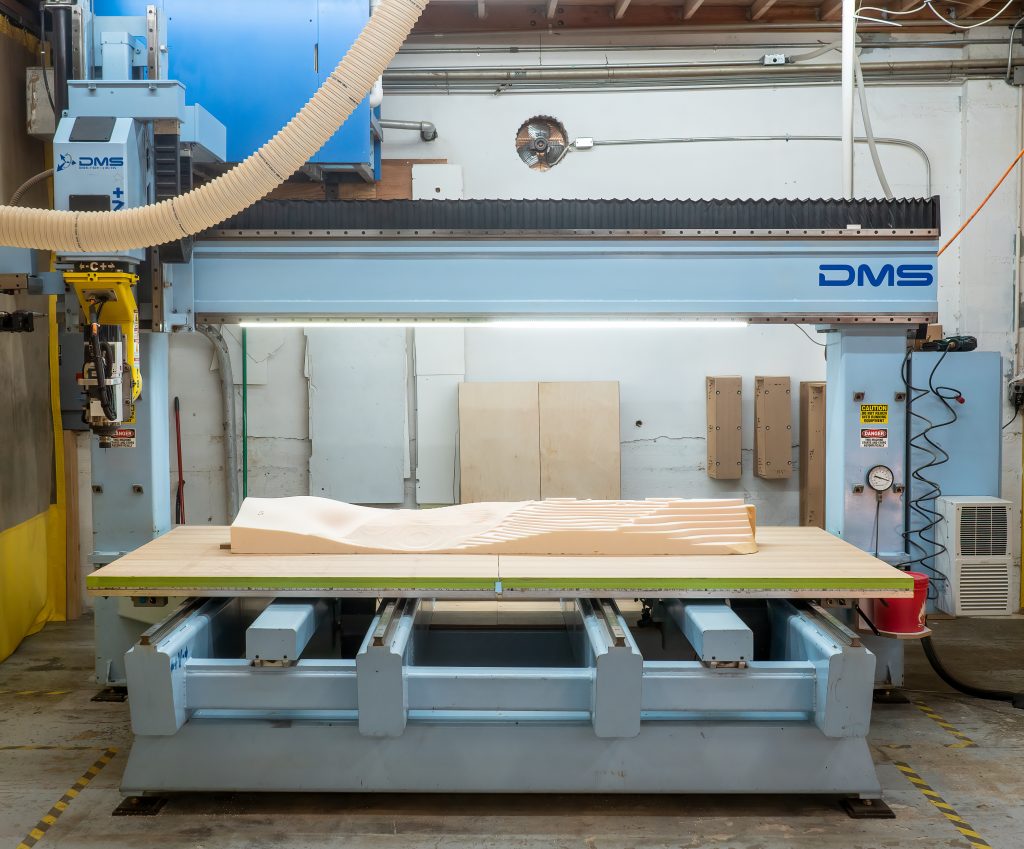Table of Contents
If you’re looking to create intricate designs or make precise cuts, a CNC router can be a valuable tool in your workshop. However, if you’re new to this technology, operating a CNC router can seem daunting at first. Fortunately, learning how to use one isn’t as complex as it may seem.
In this article, we’ll take you through the basics of operating a CNC router – from understanding the parts and components to programming and operating the machine. Whether you’re a beginner or just looking to brush up on your skills, this guide will help you get started with ease. So, let’s dive in and learn how to operate a CNC router like a pro!
- Start by turning on the router and the computer system connected to it.
- Design the project using CAD software and save it to a USB or transfer it to the router via a network connection.
- Load the design into the CNC software and set the cutting parameters such as the depth and speed.
- Secure the material to be cut onto the router bed and adjust the router bit to the correct height.
- Execute the cutting process and monitor it for any errors or issues.
- Once the cutting is complete, remove the material from the bed and turn off the router and computer.
How to Operate a CNC Router?
CNC routers are powerful tools that can help you accomplish many woodworking tasks with precision and ease. Learning how to use a CNC router is a great way to take your woodworking skills to the next level. In this article, we’ll take a look at the basics of operating a CNC router and provide you with some helpful tips and tricks.
Understanding the Basics of a CNC Router
CNC stands for Computer Numerical Control, which means that the router is controlled by a computer program. The program tells the router where to move and how much material to remove. Here are the basic parts of a CNC router:
1. Spindle: This is the cutting tool that removes material from the workpiece.
2. Worktable: This is the surface on which the workpiece is placed.
3. Control panel: This is where you enter the commands and control the machine.
4. Motors: These move the spindle and worktable according to the commands from the computer program.
To operate a CNC router, you’ll need to design your project using CAD software and then convert it into a G-code program that the router can understand.
Preparing the Workpiece
Before you can start cutting, you’ll need to prepare your workpiece. Here are the steps to follow:
1. Choose your material: CNC routers can cut a variety of materials, including wood, plastic, and metal.
2. Secure the workpiece: You’ll need to clamp the workpiece securely to the worktable to prevent it from moving.
3. Set the origin: The origin is the starting point for the machine. You’ll need to set it to the correct position on the workpiece.
Setting Up the Router
Once you’ve prepared your workpiece, it’s time to set up the router. Here are the steps to follow:
1. Install the cutting tool: Choose the appropriate cutting tool for your project and install it in the spindle.
2. Set the cutting depth: You’ll need to set the cutting depth based on the thickness of your material.
3. Set the spindle speed: The spindle speed will vary depending on the material and cutting tool you’re using.
Running the Program
Now that you’ve prepared your workpiece and set up the router, it’s time to run the program. Here are the steps to follow:
1. Load the program: Load the G-code program into the machine’s control panel.
2. Test the program: Before you start cutting, run a test program to make sure everything is working correctly.
3. Start cutting: Once you’re satisfied with the test program, you can start cutting your workpiece.
Tips and Tricks
Here are some tips and tricks to help you get the most out of your CNC router:
1. Use the right cutting tool: Choosing the right cutting tool for your project will help you achieve the best results.
2. Keep the workpiece secure: Make sure the workpiece is clamped securely to the worktable to prevent it from moving.
3. Use the right feed rate: The feed rate is the speed at which the machine moves. Using the right feed rate will help you achieve the best results.
Benefits of Using a CNC Router
Using a CNC router offers many benefits, including:
1. Precision: CNC routers are incredibly precise, which means you can achieve very detailed and accurate cuts.
2. Efficiency: CNC routers are much faster than manual routers, which means you can complete projects more quickly.
3. Versatility: CNC routers can cut a variety of materials, which makes them very versatile.
CNC Router vs. Manual Router
Here are some of the key differences between a CNC router and a manual router:
1. Precision: CNC routers are much more precise than manual routers.
2. Speed: CNC routers are much faster than manual routers.
3. Complexity: CNC routers are more complex and require more training to operate than manual routers.
In conclusion, learning how to operate a CNC router is a great way to take your woodworking skills to the next level. By following the tips and tricks outlined in this article, you’ll be able to use a CNC router with confidence and achieve great results.
Frequently Asked Questions
In this section, you will find some commonly asked questions about operating a CNC router. The answers to these questions will help you gain a better understanding of how to operate a CNC router.
What is a CNC Router and How Does it Work?
A CNC router is a computer-controlled cutting machine that uses a rotating cutting tool to cut and shape a variety of materials, such as wood, plastic, and metal. The machine works by reading a computer-generated code, which provides instructions for the machine to move the cutting tool along the X, Y, and Z axes.
The computer software controls the speed and depth of the cutting tool, allowing for precise cuts and intricate designs. The operator of the CNC router must input the design into the computer software and set the machine up for proper operation.
What Materials Can a CNC Router Cut?
A CNC router can cut and shape a variety of materials, including wood, plastic, metal, foam, and composite materials. The type of material that can be cut depends on the cutting tool and the power of the machine.
When cutting materials such as wood and plastic, the cutting tool must be sharp and properly maintained to ensure a clean and accurate cut. When cutting metal, the machine must have a high-powered spindle and cooling system to prevent damage to the cutting tool and the material.
What Safety Precautions Should I Take When Operating a CNC Router?
When operating a CNC router, it is important to follow all safety precautions to prevent injury and damage to the machine. The operator should wear protective gear, such as safety glasses, gloves, and earplugs, to protect against flying debris and loud noises.
The machine should be properly grounded to prevent electrical shock, and the cutting tool should be properly secured and maintained to prevent accidents. The operator should also be familiar with emergency stop procedures in case of a malfunction or other emergency.
How Do I Set Up a CNC Router for Proper Operation?
Setting up a CNC router for proper operation involves several steps, including selecting the appropriate cutting tool and material, inputting the design into the computer software, and setting the machine parameters, such as the cutting speed and depth.
The operator should also ensure that the machine is properly calibrated and that the cutting tool is properly aligned with the material. This may involve adjusting the machine’s settings and performing test cuts to ensure the machine is operating correctly.
What are the Advantages of Using a CNC Router?
Using a CNC router offers several advantages over traditional cutting methods. The machine can produce precise cuts and intricate designs quickly and efficiently, reducing the time and labor required for manual cutting.
The CNC router can also be programmed to repeat the same design multiple times, ensuring consistency and accuracy across multiple parts. Additionally, the machine can be used to cut a variety of materials, making it a versatile tool for a wide range of applications.
In conclusion, operating a CNC router is not as intimidating as it may seem at first. With the proper training and understanding of the machine, you can create intricate designs and produce high-quality products. Remember to always prioritize safety and accuracy when using the machine.
One of the benefits of using a CNC router is the ability to create complex designs with precision and speed. By mastering the software and understanding the capabilities of the machine, you can bring your ideas to life and produce stunning results.
Lastly, don’t be afraid to experiment and try new techniques with your CNC router. With practice and experience, you can become an expert in the field and take your projects to the next level. Keep learning and growing, and the possibilities are endless.
Request a quote today!
[contact-form-7 id="1578" title="Contact form"]
Please compress the file into a ZIP or RAR file before uploading. Alternatively, send through your RFQ by email.
enquires@unitymanufacture.com





